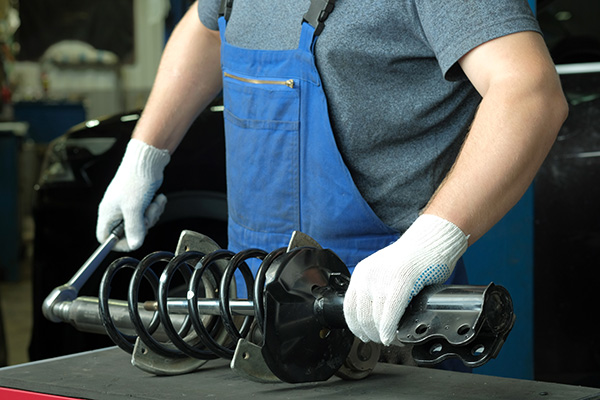
Your vehicle’s suspension system is what keeps your ride smooth, your handling stable, and your tires firmly in contact with the road. But, like all mechanical systems, it wears out over time. The problem is that suspension wear doesn’t always announce itself right away. Instead, it develops gradually, which makes it easy to overlook until performance declines or something breaks.
Catching the signs early can make a major difference in both safety and repair costs. If you’ve been noticing changes in how your car drives, it may be time to give the suspension a closer look.
Why Suspension Health Matters
The suspension system isn’t just about comfort; it also plays a huge role in your vehicle’s ability to respond to road conditions. Shocks, struts, springs, and other components all work together to keep your car stable during cornering, braking, and acceleration. If the suspension starts to fail, so does your ability to control the vehicle precisely.
Suspension issues can also increase stopping distances, cause uneven tire wear, and add stress to other vehicle systems. A worn-out suspension can lead to cascading problems, especially if you delay repairs for too long.
Changes in Ride Quality or Handling
One of the first signs of suspension wear is a noticeable difference in ride comfort. If your car begins to feel rougher over bumps, potholes, or uneven roads, your shocks or struts may be losing their ability to dampen road vibrations. The vehicle might bounce more than usual or sway excessively when cornering.
Another clear signal is difficulty steering or a loose feeling in the steering wheel. If it takes more effort to keep the vehicle in a straight line or you notice excessive body roll during turns, those are symptoms worth checking out.
Nose Dives and Rear-End Squatting
During hard braking, does the front end of your car dip downward sharply? That “nose dive” sensation indicates worn front shocks or struts. On the other hand, if the rear of your car squats when you accelerate, it may indicate that the rear suspension components are no longer providing adequate support.
These movements not only reduce comfort but also compromise control, especially in emergency situations. Over time, your ability to stop quickly or steer away from danger may be affected.
Uneven or Accelerated Tire Wear
Your suspension system helps distribute your car’s weight evenly across all four tires. When the suspension starts to fail, it can throw off this balance, causing one or more tires to wear unevenly. If you notice bald spots, scalloped edges, or rapid tread loss, it might be more than an alignment issue—it could point to worn shocks or damaged control arms.
Checking your tires regularly is a good way to catch suspension issues before they get worse. Even if the ride still feels okay, uneven wear should never be ignored.
Clunking, Rattling, or Knocking Noises
Suspension systems are built to handle vibration, but they shouldn’t make loud or persistent noises. If you hear clunking sounds when driving over bumps or rattling when turning, it could mean bushings, ball joints, or sway bar links are worn out or coming loose.
These parts help hold the suspension together and keep everything moving in sync. Once they start to fail, your car can develop dangerous handling problems.
Visible Wear or Leaks in Components
Sometimes, suspension problems are visible during a quick inspection. Leaking shock absorbers, cracked bushings, or sagging springs can all be signs that replacement is due. If your vehicle seems to sit unevenly when parked, it may be a sign of a broken or collapsed spring.
Even a quick glance under the vehicle might reveal leaking hydraulic fluid or corrosion around the mounts, which are clear indications that maintenance should be scheduled soon.
Trust Your Senses and Your Instincts
If your car suddenly feels different and you can’t explain why, your instincts are probably picking up on something subtle. Drivers often notice slight changes in handling, vibrations, or noises long before a part actually fails. Trust those signals and have a technician perform a full suspension check.
Addressing the problem early can save money and help preserve other parts of your vehicle. Plus, it ensures that your car remains safe to drive no matter what road conditions you face.
Stay Road-Ready With Suspension Service at DRIVE AutoCare in Solana Beach, CA
No one wants to deal with a bumpy ride or unsafe handling. The good news is that suspension problems are very treatable when you catch them in time.
If you’ve noticed changes in your car’s ride, unusual noises, or uneven tire wear, visit DRIVE AutoCare in Solana Beach, CA. Our expert technicians will inspect your suspension system and recommend the right repairs to keep you driving safely and comfortably.